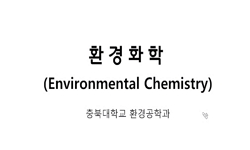The response of IPTG induction was investigated through the monitoring of the alkali consumption rate and buffer capacity during the cultivation of recombinant E. coli BL21 (DE3) harboring the plasmid pRSET-LacZ under the control of lac promoter. The ...
http://chineseinput.net/에서 pinyin(병음)방식으로 중국어를 변환할 수 있습니다.
변환된 중국어를 복사하여 사용하시면 됩니다.
- 中文 을 입력하시려면 zhongwen을 입력하시고 space를누르시면됩니다.
- 北京 을 입력하시려면 beijing을 입력하시고 space를 누르시면 됩니다.



On-line Monitoring of IPTG Induction for Recombinant Protein Production Using an Automatic pH Control Signal
한글로보기https://www.riss.kr/link?id=A100966621
- 저자
- 발행기관
- 학술지명
- 권호사항
-
발행연도
2005
-
작성언어
English
- 주제어
-
등재정보
SCIE,SCOPUS,KCI등재
-
자료형태
학술저널
-
수록면
304-308(5쪽)
- DOI식별코드
- 제공처
- 소장기관
-
0
상세조회 -
0
다운로드
부가정보
다국어 초록 (Multilingual Abstract)
The response of IPTG induction was investigated through the monitoring of the alkali consumption rate and buffer capacity during the cultivation of recombinant E. coli BL21 (DE3) harboring the plasmid pRSET-LacZ under the control of lac promoter. The rate of alkali consumption increased along with cell growth, but declined suddenly after approximately 0.2 h of IPTG induction. The buffer capacity also declined after 0.9 h of IPTG induction. The profile of buffer capacity seems to correlate with the level of acetate production. The IPTG response was monitored only when introduced into the mid-exponential phase of bacterial cell growth. The minimum concentration of IPTG for induction, which was found out to be 0.1 mM, can also be monitored on-line and in-situ. Therefore, the on-line monitoring of alkali consumption rate and buffer capacity can be an indicator of the metabolic shift initiated by IPTG supplement, as well as for the physiological state of cell growth.
동일학술지(권/호) 다른 논문
-
- The Korean Society for Biotechnology and Bioengineering
- Yoon Yoh Chang
- 2005
- SCIE,SCOPUS,KCI등재
-
Quantitative Assay of Hepatitis B Surface Antigen by Using Surface Plasmon Resonance Biosensor
- The Korean Society for Biotechnology and Bioengineering
- Hwang, Sang-Yoon
- 2005
- SCIE,SCOPUS,KCI등재
-
Separation of Protein and Fatty Acids from Tuna Viscera Using Supercritical Carbon Dioxide
- The Korean Society for Biotechnology and Bioengineering
- Kang Kil-Yoon
- 2005
- SCIE,SCOPUS,KCI등재
-
- The Korean Society for Biotechnology and Bioengineering
- Kim Yeon Hee
- 2005
- SCIE,SCOPUS,KCI등재




 ScienceON
ScienceON



